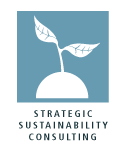A survey was conducted of more than 400 college students of the class of 2011 and their parents to determine whether or not there has been any change in overall attitude over a generation. The study found that while parents were more concerned about post-graduation employment, the college students were, in fact, more concerned about the environment. Both groups were equally concerned with making enough money to be self-sustained, good grades, and keeping up with schoolwork. Of the students polled, 18% stated that the environment was their biggest social concern. Also, 91% stated they would pick an employment position they were passionate about over earnings. When the class of 2011 graduates, time will tell if these ideals hold true.
Wednesday, June 27, 2007
Friday, June 22, 2007
NEWS: The Economist's Report on Business and Climate Change
In Early June The Economist featured a cover story entitled, “Cleaning Up: A 15-page report on how business is tackling climate change.” The report included several articles on how big companies are going green and why. The report discussed that the driving force toward green energy is not just moral pressure, but there is growing economic pressure as well. In spite of the current interest in greenhouse-gas emissions, emissions are continuing to rise:
“If greenhouse-gas emissions are to be stabilized, then the carbon price or the support mechanism for clean energy, or both, will have to rise or be adopted worldwide, or both. And if that happens, the returns on clean-energy investment will increase even further and the companies that have already invested in such businesses will have a head start over those that have not.”
SSC can help your organization understand what these new developments means for your organization and can assist your business in navigating the carbon market.
Thursday, June 14, 2007
RESOURCES: Climate Change for Small Business
Individual small business owners often have difficulty imagining their role in managing climate for the simple reason that it's hard to measure climate impact on such a tiny scale. But the total climate-related impact (or "carbon footprint") of small businesses certainly add up. While your small business may produce actual greenhouse gas emissions, it certainly has an indirect impact on climate: electricity, heating, cooling, and transportation all translate into BTUs with global warming potential.So begins Climate Change for Small Business, a background brief from ClimateBiz.com. This 5-ish page document outlines why small businesses should care about their contribution to climate change, steps for calculating a small business's climate change impact, and a list of resources for further information.
If you've seen An Inconvenient Truth but aren't quite sure what YOUR business can do to help combat climate change, this white paper is a great place to begin. Once you've read it, we're convinced that you'll want to take the next step in calculating your office's carbon footprint.
That's where we come in--Strategic Sustainability Consulting now offers Office Carbon Footprinting. In addition to measuring your climate change contribution, we'll also recommend ways to go carbon neutral in the most cost-effective and credible way possible.
Contact me at jennifer@sustainabilityconsulting.com or 202-470-3248 for more information--let's talk!
Friday, June 01, 2007
PEOPLE: Meet the SSC Summer Team
Anders Edvardsen is a Norwegian MBA (strategic management) student living in
Britt Hinchliff is currently a 4th year student at the
Denise Buhrau, a native of
Erik Rainey is a 2006 graduate of the
Frankie Cheung studied computer science at NYU and has worked almost two years in a business management role for a technology division of Merrill Lynch. After watching Al Gore's documentary, "The Inconvenient Truth," Frankie became increasingly aware of the problems facing the world today. As a result, he is currently exploring the field of sustainability as one of the paths toward a rewarding career where one can contribute to the solutions of the some world's problems. Currently, he is interested in green building, ecological footprinting, and corporate responsibility reporting.
Rose Carbonell is currently an MA candidate of
Scott Kleiman has spent summers pruning vineyards and building pig-pens as a farmhand at Spannocchia, an organic farm in
.gif)